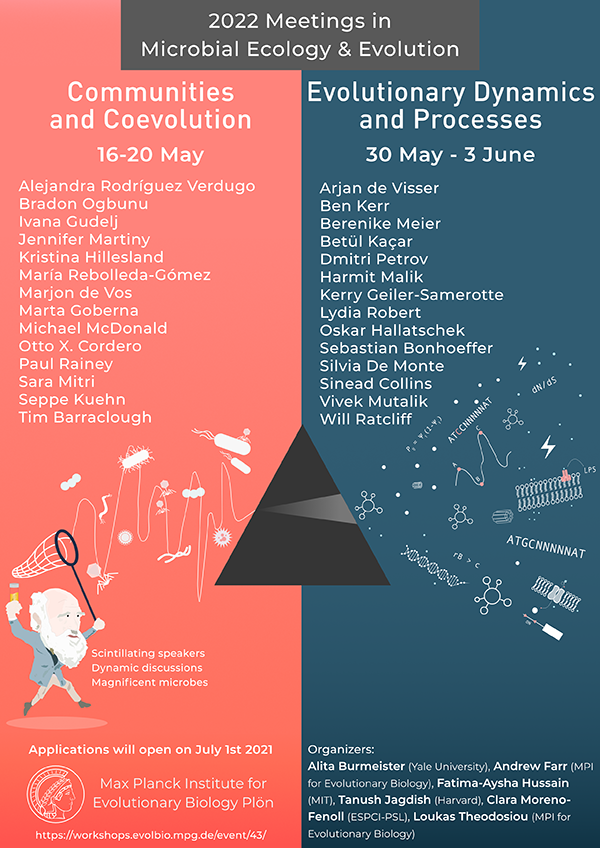Speaker
Description
Mobile genetic elements (MGEs), such as transposons and insertion sequences, propagate within bacterial genomes, but persistence times in individual lineages are short. For long-term survival, MGEs must continuously invade new hosts by horizontal transfer. Theoretically, MGEs that persist for millions of years in single lineages, and are thus subject to vertical inheritance, should not exist. Here I draw attention to an exception — a class of MGE termed REPIN. REPINs are non-autonomous MGEs whose duplication depends on non-jumping RAYT transposases. Comparisons of REPINs and typical MGEs show that replication rates of REPINs are orders of magnitude lower, REPIN population size fluctuations correlate with changes in available genome space, REPIN conservation depends on RAYT function, and REPIN diversity accumulates within host lineages. These data lead to the hypothesis that REPINs form enduring, beneficial associations with eubacterial chromosomes. Given replicative nesting, the hypothesis predicts conflicts arising from the diverging effects of selection acting simultaneously on REPINs and host genomes. Evidence in support comes from patterns of REPIN abundance and diversity in two distantly related bacterial species. Together this bolsters the conclusion that REPINs are the genetic counterpart of mutualistic endosymbiotic bacteria.

